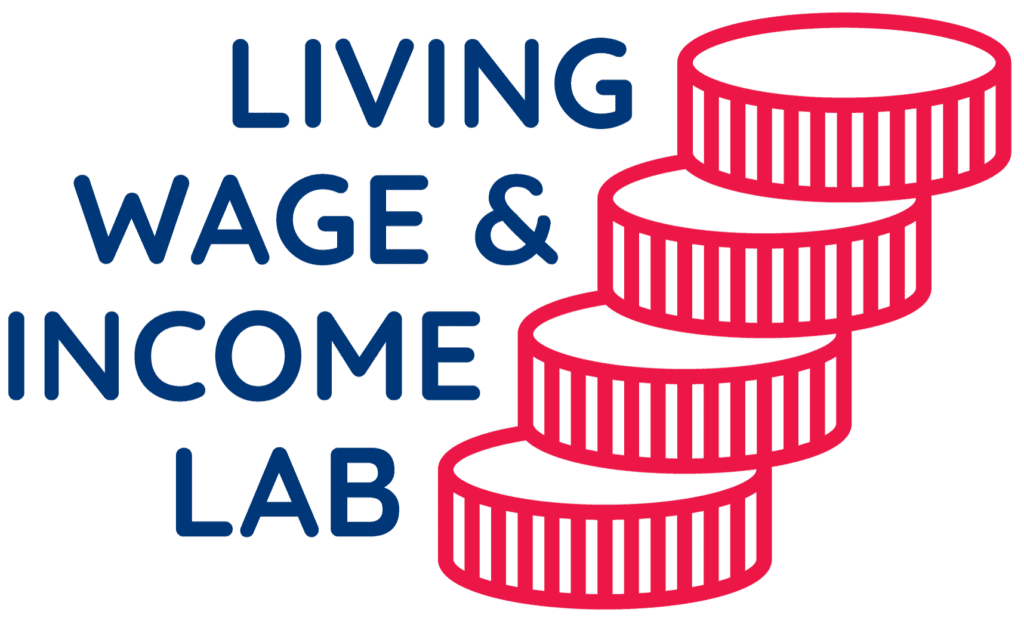What do Tony’s Chocolonely, Fairtrade Original and Eosta have in common? Despite working with different commodities, tackling low wages is a priority among their main sustainability practices.
What do Tony’s Chocolonely, Fairtrade Original and Eosta have in common? Despite working with different commodities, tackling low wages is a priority among their main sustainability practices. On February 8, the three companies joined Fairfood at the Living Wage & Income Lab to discuss concrete ways to accelerate change in global food supply chains. Based on their different journeys – Tony’s with cocoa, Fairtrade Original with coffee and Eosta with fresh organic fruits like mango, passion fruit and avocado – the team formed a good roadmap on how to incorporate living wages and income ambitions into everyday business practices.
The conversation, which also featured OXFAM’s Uwe Gneiding, had Paul Schoenmakers (Head of Impact at Tony’s Chocolonely), Monique Mooij (Marketing Coordinator at Eosta), Lotje Kaak (Sourcing & Development Manager at Fairtrade Original) and Uwe Gneiting (Senior Researcher in Oxfam America) describing their procurement efforts, walking through the practical differences when working with a living wage and a living income and the different frameworks out there to help you identify which is the best way to start working.
Two more sessions of the Lab will take place in 2022. You can help us set the agenda for the next session through this form. Watch the session here or scroll down to read the highlights.
-
We need everyone on board – and we need to be inclusive about it
Speakers underlined the importance of partnerships and joining like-minded organisations for actual sector-level change. As a frontrunner committed to making fairness work on a competitive level, Tony’s Chocolonely’s strategy doesn’t stop at their own farmers; inspiring other companies to join is equally important. “We need volume to keep pushing the idea of a fair product, because if a corporation is fully dependent on just one brand, then this big dependence will weaken it. That’s why we started with Tony’s Open Chain“, Paul Schoenmakers explained. This industry-led initiative is meant to help chocolate brands of all sizes to transform their cocoa supply chains by learning from Tony’s programs and network. “The first five principles that we drafted are actually designed to be fully scalable. Tony’s fast growth, between 30% to 50% year-on-year, is replicable. We are proving now, with five missionaries that joined our way of working, that we can grow even further,” he explained.
For the private sector and from a government perspective, transparent business practices like we see at Tony’s Chocolonely are important if we want to work towards a system-level change, OXFAM’s Uwe explained. But we need to tackle this from both ends; It’s about sharing knowledge and bringing more companies to the discussion, but even more so about addressing power imbalances by making farmers active participants right from the project development phase. “Farmers are still sidelined in this discussion”, Uwe explained. Enhancing their bargaining power through greater representation in the discussion is important to reverse that.
-
Integrate a living income/wage in your core business practices
But how exactly do we include farmers’ voices in daily practices? “Of course price is important here, but if the general trade relationship the company has with farmers is briefed by human rights due diligence, a living income is integrated in core business practices”, Uwe continues. Strategies may vary, he says, but if we consider the inclusivity aspect by segmenting farmers and developing payment strategies according to their needs, you end up consolidating your supply chain.
In practice, this is how Monique Mooij from Eosta, an international distributor of fresh organic fruits, described the importance of developing a good relationship with your supplier, making the chain as short as possible: “We depend on transparent relationships to make the right assessment on the gap between a living income and their income. There are so many aspects that will vary all over the world, such as the minimum wage, that we cannot influence. But if you pay close attention, you will find out what can be done.”
Lotje Kaak from Fairtrade Original, added that making it their mission encompassed following closely international research on living income reference prices that really looks at the farmer’s context and what she or he needs to earn to achieve that living income. “We also take part in that research with the farmers that we work with, and commit ourselves to paying living income reference prices.” But once you reach this value, she shares, the next phase is defining the interventions to close the gap, that can be focused on productivity, decreasing costs, cost production or diversification. “We search for partnerships – for instance the Futureproof Coffee Collective, a collective of coffee brands in the Netherlands working on living income – and use our development budget, but we also look for external funding for additional projects”, she says.
“At Eosta, our intervention starts with the Premium model. First, we have the salary assessments. Then we know the standard living income by benchmark, so we can calculate what a living income is. Next, we need to know how many kilos we take from a supplier because this allows us to calculate the Premium per kilo that goes to the workers. In the end it cost us, for example, two cents more per avocado to make it a living income avocado. Only two cents.”
-
Breaking with the myth of hierarchy
Within companies, we tend to see the struggle concentrated between sustainability and procurement practices, and OXFAM strongly recommends creating alignment on this. Whether combining the two functions, or creating incentives for them to work together. But across the chain, he sees power relations differently. “It’s not as top down as it looks. Processors and traders really do have a lot of power and are not necessarily easily swayed by their buyers. On the contrary: they are very few and that means a lot of bargaining power”, he explains. However, he points out to an area where great power on pricing power lies, but few incentives for them to use their power are seen: the retail level.
“They are the ones who can buy avocados that cost 2 cents more. All we can do is ask, ’do you want to buy the living wage-included avocado or stick to the normal’”, Eosta’s Monique pointed out, underlining the importance to keep communicating their initiatives and keep this topic high on the agenda. With no certification for a living wage or income, or legislation forcing retailers to source their products responsibly, they all agree consumers are not yet fully aware of what reality lies behind their products. All they can see, Fairtrade’s Lotje says, is price: “How do we convince retailers to put our products on the shelf, while it’s so promotion-driven, or consumers to pick our products while they are faced with the option of buying so much more for less?”, she concluded. Which brings us back to the first topic: inclusivity and transparency to, finally, get everyone on the same page.
You can read more on the session – including questions that were left unanswered – in this post. Stay tuned, as more discussions are to come!



